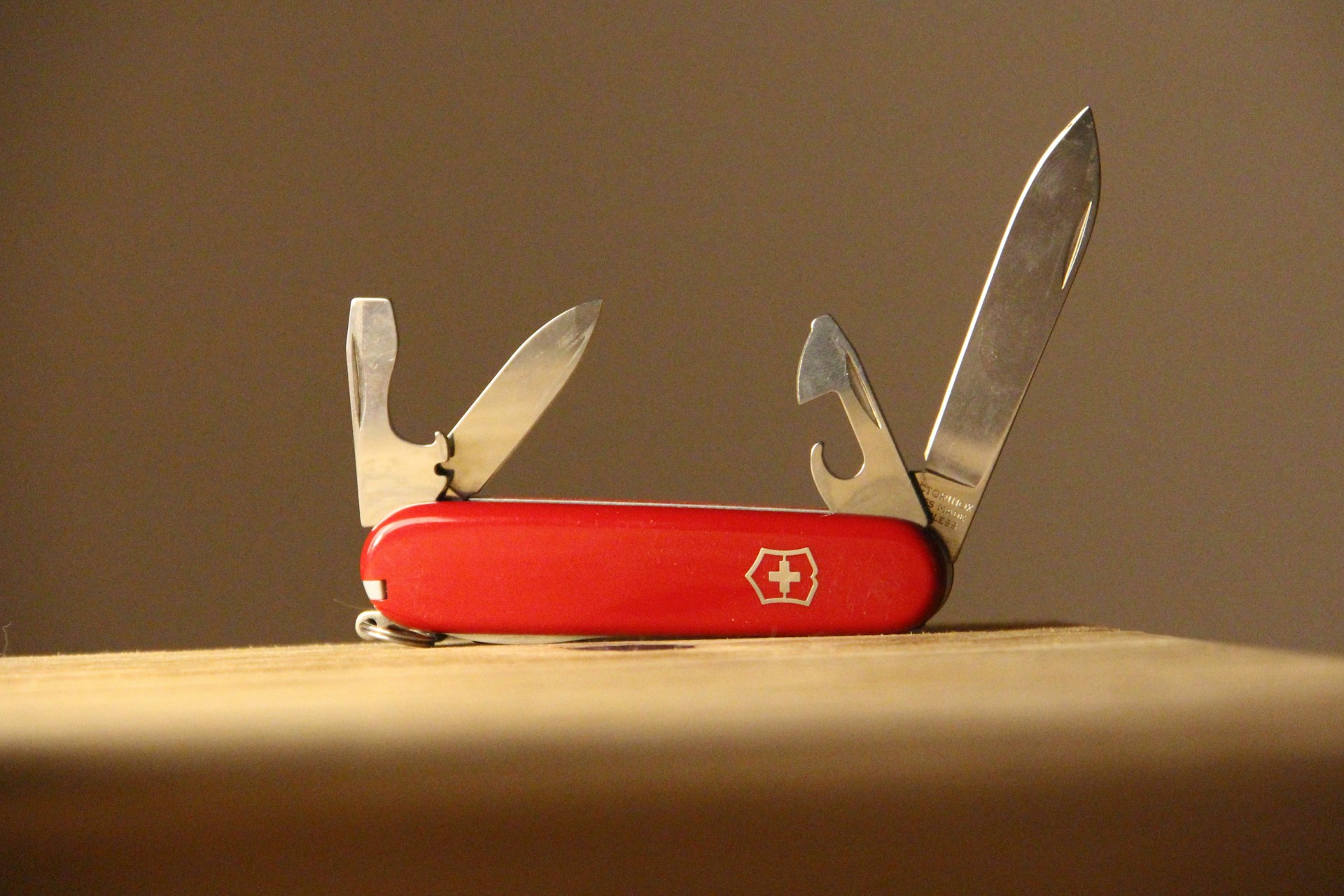Preparedness
Florida Millionaire’s Deadly Plot Unravels in Shocking FBI Investigation

In a chilling case reminiscent of a crime thriller, a wealthy Florida real estate developer’s life ended in tragedy as he allegedly orchestrated a series of murder-for-hire plots against his wife. According to the FBI, Sergio Pino, a multimillionaire, took his own life just as authorities were closing in on him for attempting to have his wife, Tatiana Pino, killed.
The FBI’s investigation revealed that Sergio Pino had hired multiple hitmen to carry out his sinister plans. The motive behind these plots was reportedly Tatiana’s rejection of a $20 million divorce settlement offer from her husband of 32 years.
The case took a dramatic turn on June 23, when a gunman allegedly confronted the couple’s daughter, Alessandra Pino, in their driveway. Alessandra, in a frantic call to 911, exclaimed, “Oh my gosh. My mom is here. They might have shot her.”
Pinecrest Police Department Chief Jason Cohen recounted, “[Tatiana] came home from her morning errands, and as she pulled in the driveway, this person pulled up, got out of the car with a firearm. Her daughter actually came out of the house and kind of went face to face with this gunman who clearly wasn’t there for the daughter because he, from what I understand, he had the ability to shoot her if he wanted to, and he didn’t.”
The gunman fled the scene as officers responded, unable to carry out what investigators believe was an attempt on Tatiana’s life. This incident was not the first attempt on Tatiana’s life. A year earlier, a rented Home Depot truck rammed into her SUV in the same driveway.
Cohen explained, “We were made aware of a lot of the background of what had been going on with Mrs. Pino, the accusations of her being poisoned or drugged by potentially her soon-to-be ex-husband … it started to make sense that this was just another piece in that big puzzle.”
The murder-for-hire plot reportedly began as early as July 2022. U.S. Attorney Markenzy Lapointe disclosed that hitmen even “obtained fentanyl to assist Sergio Pino in his effort to kill his wife,” adding that “Mrs. Pino had to die before their next divorce proceedings.”
The FBI’s investigation culminated in a search and arrest operation at the Pinos’ $8 million waterfront home on July 16. However, Sergio Pino allegedly committed suicide before he could be apprehended.
The FBI stated in a press release, “Sergio Pino was discovered by the FBI inside the residence deceased from an apparent self-inflicted gunshot wound.”
Pino’s criminal defense attorney, Sam Rabin, commented on the situation: “Sergio Pino took his own life today. The level of law enforcement activity at his residence was unprecedented and unnecessary, especially since we had offered to surrender him, should that have become necessary.”
The investigation continues, with several suspects charged and indicted for their involvement in the plot against Tatiana. These include Bayron Bennett, Fausto Villar, Avery Bivins, Clementa Johnson, Diori Barnard, Jerren Keith Howard, Michael Jose Dulfo, and Edner Etienne, who face potential life sentences if convicted.
The FBI has recorded phone calls between some of the suspects, revealing their involvement in the plot. Bivins allegedly agreed to a $150,000 deal from Villar to murder Tatiana, with a bonus promised if the act went undetected by law enforcement.
Reflecting on the case, Chief Cohen remarked, “I’ve been in law enforcement for 27 years, and something like this … it seemed like something out of a Hollywood movie, but this was unfortunately real life.”
The Pinos’ financial records revealed a net worth between $153 million and $359 million in 2022, underscoring the high stakes involved in this tragic saga.
Let us know what you think, please share your thoughts in the comments below.

Preparedness
5 Ways to Make Your Home Safer Immediately

A safe home does not require expensive upgrades or complicated systems. Many of the most effective changes are simple steps you can take right now. Whether you are preparing for a storm, a power outage, or everyday security issues, knowing how to strengthen your home quickly can give you immediate peace of mind. These five actions take only minutes, but each one cuts down real risks and helps protect the people and belongings you care about.
1. Improve Your Exterior Lighting
Poor lighting makes it easier for accidents and break-ins to happen. Adding bright bulbs to porches, pathways, and driveways is one of the fastest ways to reduce danger. Motion-sensor lights are inexpensive and use very little electricity. Good lighting keeps you from tripping in the dark and makes your home less inviting to anyone with bad intentions.
2. Check and Strengthen Your Locks
Many people assume their locks are secure until they actually test them. Walk through your home and check every door and window. Make sure each one closes fully and locks tightly. If any lock feels loose, replace it or tighten the screws. Installing a simple deadbolt on exterior doors adds a major layer of protection. Even a small upgrade can stop forced entry attempts.
3. Remove Common Indoor Hazards
Home accidents often start with everyday items that people overlook. Clear walkways, secure loose rugs, organize power cords, and remove anything that blocks exits. Check that smoke alarms and carbon monoxide detectors work and have fresh batteries. A few minutes of hazard removal can prevent falls, fires, or smoke-related emergencies.
4. Create a Simple Emergency Plan
During a crisis, confusion and panic cause more harm than the event itself. Make a basic plan that covers where you will meet, how you will communicate, and which items you would grab in an evacuation. Keep a small emergency kit in an easy-to-reach spot. A clear plan allows you to act quickly instead of scrambling in the moment.
5. Reinforce Entry Points
Windows and doors are the first places that fail during break-ins and strong storms. Adding simple reinforcements helps keep your home secure. Install window locks or wooden rods to prevent sliding windows from opening. Secure your garage door by engaging the manual lock. Place a doorstop or wedge behind vulnerable doors for added strength. Small changes can significantly increase resistance during emergencies.
Final Thoughts
Home safety starts with awareness and small improvements that add up quickly. By increasing light, checking locks, removing hazards, planning ahead, and reinforcing entry points, you create a safer environment for both everyday life and unexpected emergencies. You do not need expensive systems to protect your home. You just need a few smart steps and the habit of staying prepared.
Preparedness
10 Cheap Preps and Survival Tools You Can Buy for Under 10 Dollars

You do not need a huge budget to build a reliable emergency kit. Some of the most useful survival items are inexpensive, simple, and easy to find at any hardware store, dollar store, or online. For under 10 dollars, you can add tools that keep you warm, help you navigate darkness, protect your supplies, and give you an advantage when a crisis hits. Survival does not start with expensive gear. It starts with smart choices that give you options when you need them most.
Here are ten low-cost essentials that can make a real difference in any emergency.
1. LED Flashlight
A basic LED flashlight is one of the most important tools you can own. Even small models provide strong light, last a long time on batteries, and fit easily into a pocket or bag. In any power outage, losing visibility is the first major challenge. A cheap flashlight solves that instantly.
2. Waterproof Matches or a Butane Lighter
Fire is essential for warmth, light, boiling water, and morale. Waterproof matches or a simple butane lighter cost very little and work in nearly any weather. Keep several in different locations, such as your car, kitchen, and emergency kit.
3. Emergency Mylar Blanket
These thin, reflective blankets trap body heat and prevent hypothermia. They weigh almost nothing and fold down to the size of a wallet. Mylar blankets are used by hikers, first responders, and disaster teams because they work. At under a dollar each, they are one of the best survival bargains you can buy.
4. Duct Tape
Duct tape might be the most versatile tool in survival. You can patch a tarp, repair a tent, secure a bandage, create a splint, seal drafts, or waterproof containers. A small roll is cheap, portable, and useful in almost every emergency situation.
5. Plastic Tarps
A simple tarp can act as shelter, roof patching, ground cover, rainwater collection, shade, or wind protection. Even lightweight tarps create instant barriers between you and the weather. They are one of the most efficient budget tools for surviving outdoors or protecting your home.
6. Batteries
A flashlight is useless without power. Stocking AA or AAA batteries ensures your lighting, radio, or small devices continue to work during blackouts. Rotating your batteries once a year keeps them fresh and ready.
7. Water Storage Containers
Clean water is the first priority in any emergency. Inexpensive plastic jugs or collapsible water containers allow you to store several gallons safely. Keeping extra containers around means you can fill them quickly before storms or boil-water advisories.
8. Basic First-Aid Supplies
Under 10 dollars, you can build a simple first-aid kit that includes bandages, antiseptic wipes, gauze, tape, and pain relievers. Minor cuts and infections become serious problems during emergencies. A small, inexpensive kit prevents these issues from getting worse.
9. Candles or Tealights
Candles are a cheap and reliable backup source of light. They are easy to store and last a long time. A few tealights can illuminate a room and provide comfort when power is out. Just use them safely and never leave them unattended.
10. Multi-Tool or Pocket Knife
Many budget multi-tools cost under 10 dollars and still offer blades, screwdrivers, scissors, and small pliers. They are not as rugged as premium tools, but in a crisis, having even a basic multi-tool is far better than having nothing.
Final Thoughts
Building a survival kit does not require expensive gear or specialty equipment. These ten tools cost less than a takeout meal, yet each one adds real strength to your ability to handle emergencies. Start with the basics. Add a few items each month. Over time, you will build a dependable, low-cost emergency setup that prepares you for storms, outages, travel problems, and unexpected challenges.
Off The Grid
10 Foods That Could Save Your Life When Crisis Hits

When a real emergency strikes, the first thing most people lose is access to fresh food. Storms shut down roads, power outages spoil everything in the refrigerator, and grocery shelves empty faster than anyone expects. Having the right foods stored can turn a dangerous situation into something you can manage calmly. The key is choosing items that last a long time, do not require refrigeration, and can give your body the energy it needs when conditions get tough.
Here are ten simple, affordable foods that could literally keep you alive when everything else disappears.
1. Canned Beans
Canned beans are one of the most complete emergency foods on the planet. They are packed with protein, fiber, and slow-burning carbohydrates. They can be eaten cold right out of the can if there is no power. Black beans, kidney beans, chickpeas, and pinto beans all work the same way.
2. Rice
Rice is a survival classic because it lasts for years, stores easily, and gives steady energy. White rice stores longer than brown rice, but both are excellent. Combined with beans, rice becomes a complete meal that keeps you full and focused during tough situations.
3. Peanut Butter
Peanut butter is calorie-dense, shelf-stable, and requires zero preparation. A single spoonful provides fat, protein, and fast energy. It can stay good for months after opening if stored in a cool place. In any emergency, peanut butter becomes a go-to survival powerhouse.
4. Canned Meat
Tuna, chicken, salmon, and Spam all offer long-lasting protein that does not require cooking. Canned meat keeps hunger away and helps your body stay strong when facing stress. Always keep a few cans in your emergency kit or pantry.
5. Oats
Oats are cheap, filling, and versatile. You can eat them hot if you can boil water or cold by soaking them for a few minutes. They give long-lasting energy and help keep your stomach comfortable during stressful times.
6. Shelf-Stable Milk
Powdered milk or boxed shelf-stable milk are lifesavers when refrigeration is gone. They provide calcium, protein, and comfort. Powdered milk lasts the longest and takes up the least space, making it an ideal survival-food staple.
7. Pasta
Pasta stores extremely well and is easy to prepare. Even if you cannot fully boil it, soaking pasta in hot water will make it soft enough to eat. It is a reliable way to stretch meals and keep energy levels steady.
8. Honey
Honey lasts forever. It never spoils and can still be eaten decades later. It boosts energy, soothes sore throats, and adds flavor to otherwise bland survival meals. A small jar goes a long way and can lift morale when days feel long and stressful.
9. Canned Vegetables
Fresh produce is the first thing to disappear during a crisis. Canned vegetables fill that gap with vitamins and hydration. Corn, peas, mixed vegetables, and green beans all store well and give your body the nutrients it normally gets from fresh groceries.
10. Water
No food matters without water. Store at least one gallon per person per day. Bottled water, water jugs, and water purification tablets all belong in your emergency kit. If you have space, keep extra. When the tap stops working or becomes unsafe, clean water becomes the most valuable survival item you own.
Final Thoughts
These ten foods are not fancy and they are not expensive, but they can keep you alive when normal life breaks down. Building a simple survival pantry does not require fear or extreme prepping. All it takes is a few smart choices, a little extra storage space, and the peace of mind that comes with knowing you can take care of yourself no matter what happens outside.
-

 Tactical2 years ago
Tactical2 years ago70-Year-Old Fends Off Intruder with Lead-Powered Message
-

 Tactical2 years ago
Tactical2 years agoVape Shop Employee Confronts Armed Crooks, Sends Them Running
-

 Preparedness1 year ago
Preparedness1 year agoEx-Ballerina’s Guilty Verdict Sends Tremors Through Gun-Owner Community
-

 Off The Grid2 months ago
Off The Grid2 months ago10 Foods That Could Save Your Life When Grocery Shelves Are Empty
-

 Preparedness1 year ago
Preparedness1 year agoGood Samaritan Saves Trooper in Harrowing Interstate Confrontation
-

 Preparedness1 month ago
Preparedness1 month ago5 Things You Should Always Carry During a Winter Storm
-

 Preparedness6 months ago
Preparedness6 months agoHow Much Gasoline Should You Store for Emergencies?
-

 Nature and Wildlife2 months ago
Nature and Wildlife2 months ago10 Survival Skills You Should Learn Before You Need Them